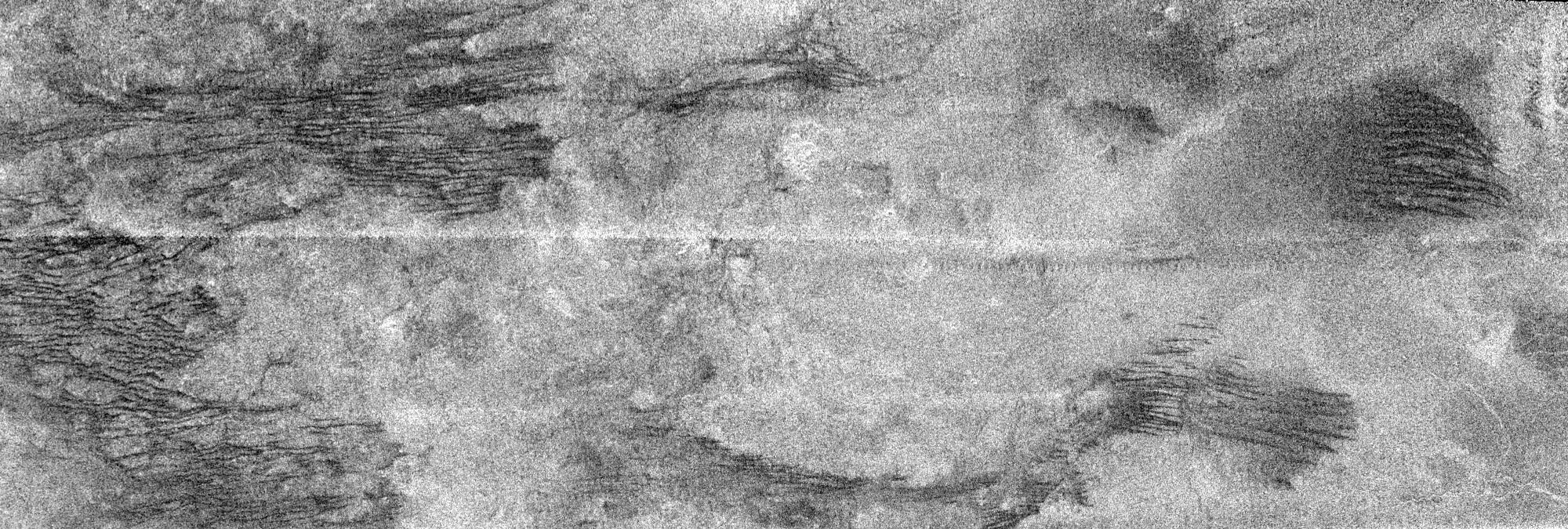Cat Scratches

| PIA Number | PIA07009 |
|---|---|
| Language |
|
This image is a portion of the swath acquired by the Cassini Titan radar mapper on Feb. 15, 2005, on the mission's second opportunity to image the surface with radar.
The frame, measuring about 300 kilometers (186 miles) from top to bottom, shows an area near the northeast corner of the large optically bright region named Xanadu.
Running across the image are a series of roughly parallel, mostly east-west dark linear features that join and separate, which are not seen in the previous radar images. They may be formed by the action of eastward-flowing winds, or geologic processes acting on the crust itself. In places they cut through adjacent terrain, while elsewhere the lineaments seem to be interrupted by brighter material, appearing again on the other side. Seams between radar segments are visible as horizontal, sawtooth-shaped lines.
Bright material in radar images may be rough or sloped toward the radar (which is observing from the top in this frame). Also, some of what is seen may in fact be below the surface, revealed as the radio waves penetrate overlying, radar-transparent material.
The Cassini-Huygens mission is a cooperative project of NASA, the European Space Agency and the Italian Space Agency. The Jet Propulsion Laboratory, a division of the California Institute of Technology in Pasadena, manages the Cassini-Huygens mission for NASA's Science Mission Directorate, Washington, D.C. The Cassini orbiter and its two onboard cameras were designed, developed and assembled at JPL. The radar instrument team is based at JPL, working with team members from the United States and several European countries.
For more information about the Cassini-Huygens mission visit http://saturn.jpl.nasa.gov.
Credit: NASA/JPL
